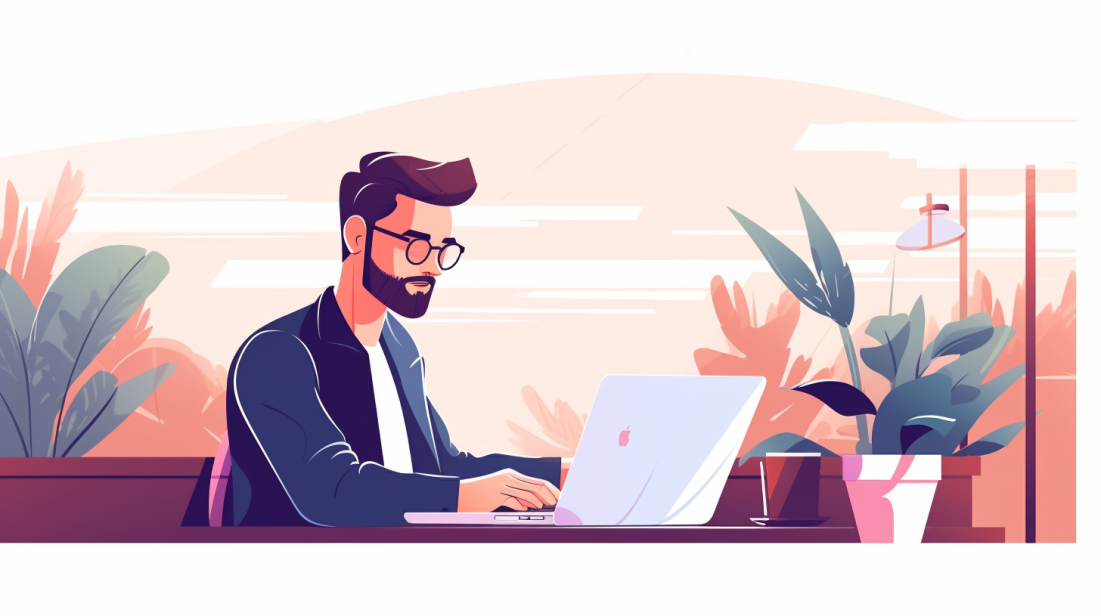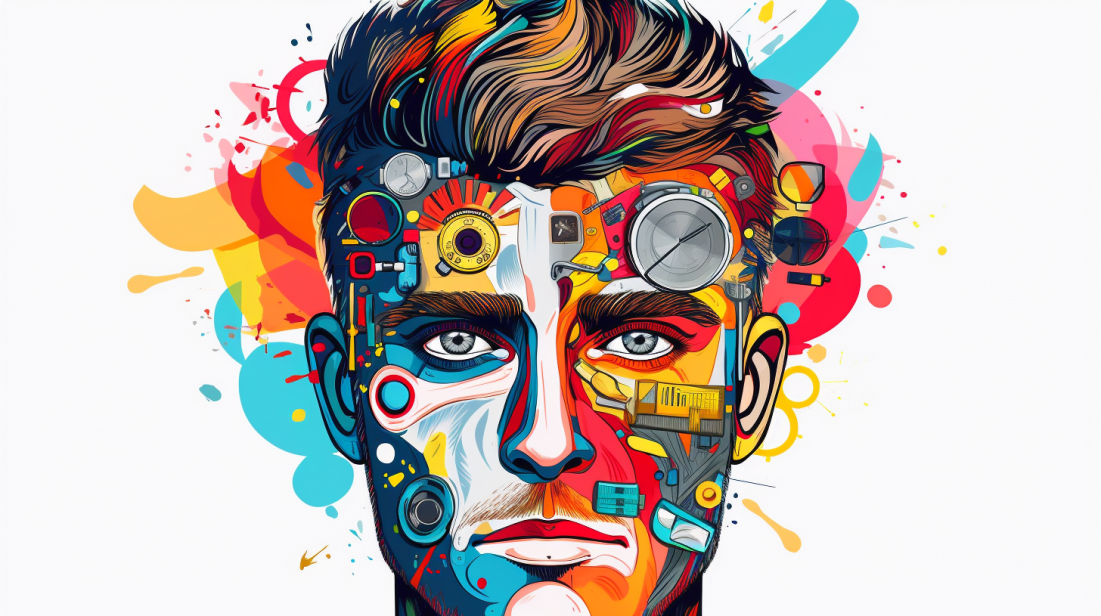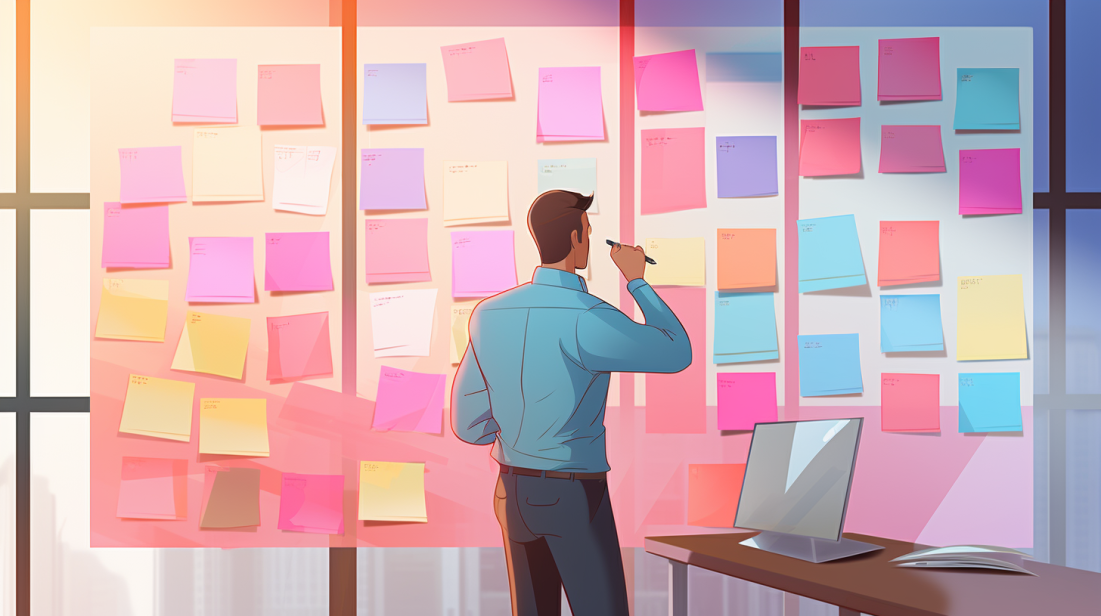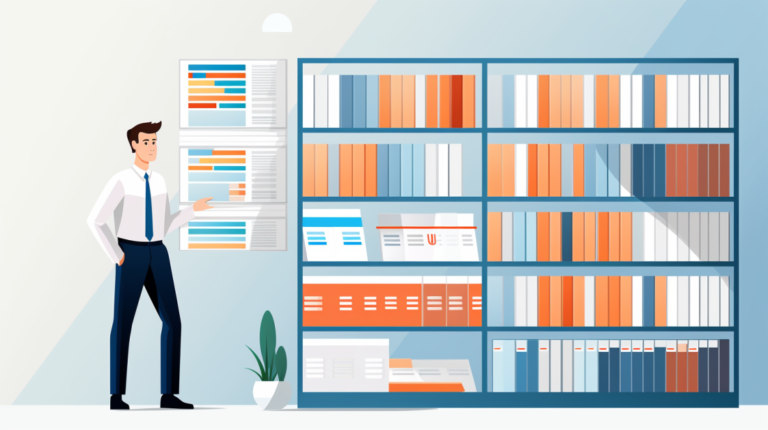The Designer Career Path: A Comprehensive Guide

Welcome to The Designer Career Path: A Comprehensive Guide, where I will take you on an exciting exploration of the world of design and provide insights into the education, skill building, and the journey you can embark on as a designer.
Design is an incredibly diverse and dynamic field, offering countless opportunities for creativity and professional growth. Whether you are just starting out or looking to advance your career, this guide will equip you with the knowledge and resources you need to thrive in the design industry.
Design encompasses a wide range of disciplines, from graphic design and web design to user experience (UX) design and product design. As a designer, you have the flexibility to choose the area that aligns with your passions and interests. The versatility of a designer career allows you to explore different design disciplines and find your niche in the industry.
Key Takeaways:
- Design is a diverse field with various disciplines, including graphic design, web design, and product design.
- Choosing a design discipline that aligns with your interests can lead to a more fulfilling and successful career.
- Stay open to exploring different design disciplines to expand your skillset and broaden your opportunities.
- Continuous learning and skill building are essential for growth as a designer.
- Embrace the journey of becoming a designer and be proactive in designing your own career path.
As we delve deeper into this guide, we will discuss the different design disciplines, mastering design fundamentals, developing design thinking and strategy, navigating design education and technology, embracing design ethics and responsibility, and designing a successful career path. We will also explore how to stay inspired and continuously evolve as a designer to keep up with the ever-changing industry.
So, grab your creative mindset and join me on this comprehensive guide, where we will unlock the secrets to a successful and fulfilling designer career!
The Versatility of a Designer Career
As a designer, you have the opportunity to work in various exciting fields such as graphic design, web design, user experience design, user interface design, product design, industrial design, fashion design, interior design, and even architecture. The world of design is vast, offering a multitude of paths to explore and specialize in. Whether you have a passion for creating visually stunning graphics, crafting intuitive user experiences, or bringing innovative products to life, there is a design discipline that suits your interests and skills.
Take graphic design, for example. It involves creating visual concepts using computer software or by hand to communicate ideas that inspire, inform, and captivate consumers. Web design, on the other hand, focuses on creating and maintaining visually aesthetic websites that are user-friendly and functional. User experience (UX) design and user interface (UI) design are crucial for shaping the interactions between users and digital products, ensuring a seamless and enjoyable experience. If you have a flair for fashion, fashion design allows you to bring your artistic vision to life through clothing and accessories. Interior design, on the other hand, involves creating functional and aesthetically pleasing spaces for residential, commercial, or industrial use. And let’s not forget about architecture, where designers create functional and visually stunning buildings that enhance our surroundings.
Each design discipline presents unique challenges and opportunities. Whether you choose to specialize in one area or explore multiple fields, your creativity and problem-solving skills will be key in delivering innovative and impactful designs. The versatility of a designer career allows you to adapt to evolving trends and industries, ensuring you stay relevant and in-demand.
So, if you’re considering a career in design, take the time to explore the different disciplines, figure out what excites you the most, and embrace the versatility that awaits. Your journey as a designer is only limited by your imagination and willingness to continuously learn and grow.
Within the design field, there are various disciplines to explore, such as art direction, branding, advertising, marketing, creative direction, concept development, sketching, prototyping, 3D modeling, rendering, and animation. Each discipline offers unique opportunities for designers to express their creativity and make a meaningful impact through their work.
Art direction, for example, involves overseeing the visual style and aesthetic of a project, ensuring the message is effectively communicated through visuals. It requires a keen eye for detail and the ability to guide a team of creatives towards a common vision.
Branding and advertising involve creating visual identities and campaigns that resonate with target audiences. It requires a deep understanding of consumer behavior and the ability to craft compelling narratives through design.
Marketing, on the other hand, focuses on promoting products or services using various design strategies. It involves market research, creating engaging content, and understanding how design can influence consumer decision-making.
Whether you choose to specialize in a single discipline or explore multiple areas, the design field offers endless possibilities for growth and creative expression. By honing your skills in areas such as sketching, prototyping, 3D modeling, rendering, and animation, you can bring your design concepts to life and captivate audiences with your visual storytelling.
Table: Design Disciplines and Their Key Skills

| Design Discipline | Key Skills |
|---|---|
| Art Direction | Visual storytelling, team coordination, attention to detail |
| Branding | Logo design, brand identity development, market research |
| Advertising | Campaign creation, copywriting, visual communication |
| Marketing | Consumer behavior analysis, content creation, strategy development |
| Creative Direction | Conceptualization, project management, leadership |
| Concept Development | Idea generation, problem-solving, brainstorming |
| Sketching | Visual exploration, concept visualization, quick ideation |
| Prototyping | Model creation, user testing, iteration |
| 3D Modeling | Product rendering, virtual prototyping, architectural visualization |
| Rendering | Visual effects, realistic representation, lighting |
| Animation | Motion graphics, storytelling, timing and movement |
By understanding the different design disciplines and honing your skills in specific areas, you can carve out a successful and fulfilling career in the field of design.
Remember, the design industry is constantly evolving, and it’s important to stay updated with the latest trends and technologies. Continuously seek inspiration, explore new techniques, and embrace opportunities for growth to stay ahead in this dynamic field. Whether you choose to work in art direction, branding, advertising, marketing, or any other design discipline, your creativity and passion for design will be the driving force behind your success.
Mastering Design Fundamentals
Becoming a successful designer requires a solid foundation in essential skills such as typography, color theory, layout design, and visual design. These fundamental skills serve as the building blocks for creating visually appealing and effective designs across various disciplines. Let’s explore each of these skills in more detail:
Typography
Typography is the art of arranging and designing typefaces, fonts, and text within a design. It involves selecting and pairing fonts, understanding hierarchy and alignment, and creating visually pleasing and readable text. Effective typography can greatly impact the overall look and feel of a design, evoking different emotions and conveying messages with clarity.
Color Theory
Color theory plays a crucial role in design, as colors have the power to evoke emotions, create moods, and communicate messages. Understanding color harmony, contrast, and the psychology of colors enables designers to make informed choices when selecting and combining colors in their designs. A well-executed color palette can enhance the visual appeal and convey the intended message effectively.
Layout Design
Layout design involves organizing and arranging visual elements within a design, including images, text, and other graphic elements. It requires a balance between aesthetics and functionality, ensuring that the design is visually pleasing and user-friendly. A well-structured layout guides the viewer’s eye, communicates hierarchy, and presents information in a clear and engaging manner.
Visual Design

Visual design encompasses the overall look and feel of a design, focusing on aesthetics, composition, and the use of graphic elements. It involves creating visually appealing compositions, selecting appropriate imagery, and leveraging design principles such as balance, alignment, and contrast. Effective visual design enables designers to create visually striking and impactful designs.
By mastering these fundamental skills, designers can lay a strong foundation for their career and excel in their chosen design discipline. These skills are applicable across various design fields, including graphic design, web design, user experience design, and more. With continuous practice and exploration, designers can refine their skills and create compelling designs that captivate and engage their audience.
| Benefits of Mastering Design Fundamentals: |
|---|
| 1. Enhances the visual appeal of designs |
| 2. Creates visually engaging and effective communication |
| 3. Establishes a strong foundation for design careers |
| 4. Enables effective collaboration with other designers and stakeholders |
| 5. Facilitates seamless adaptation to evolving design trends and technologies |
Developing Design Thinking and Strategy
Design thinking and strategy are crucial elements that can separate an exceptional designer from the rest, empowering them to create impactful solutions. Additionally, understanding design management can help in navigating the complexities of a successful design career.
Design thinking involves approaching problems with a human-centered mindset, focusing on empathy, experimentation, and collaboration. By adopting this approach, designers can gain a deep understanding of user needs and develop innovative solutions. It requires curiosity, creativity, and the ability to think outside the box.
Table: Design Thinking Principles
| Principle | Description |
|---|---|
| Empathy | Understanding and empathizing with user needs and challenges. |
| Ideation | Generating a wide range of ideas and potential solutions. |
| Prototyping | Creating tangible representations of ideas for quick testing and iteration. |
| Testing | Gathering feedback and insights from users to refine and improve designs. |
“Design thinking is a human-centered approach to innovation that integrates the needs of people, the possibilities of technology, and the requirements for business success.” – Tim Brown
Design strategy, on the other hand, involves aligning design decisions with business goals and objectives. It requires a deep understanding of the target audience, market trends, and competition. By strategically planning design initiatives, designers can create solutions that not only meet user needs but also drive business growth.
Design Management and Career Success

Design management encompasses the skills and strategies needed to effectively plan, organize, and execute design projects. It involves coordinating cross-functional teams, managing budgets and timelines, and ensuring the successful delivery of design solutions.
Employers increasingly value designers who can demonstrate strong design management abilities, as it showcases their capacity to oversee complex projects and lead teams. By developing skills in design management, designers can position themselves for senior-level roles and greater career opportunities.
As designers, honing our design thinking, strategy, and management skills is essential to staying relevant in a rapidly evolving industry. By embracing these elements, we can elevate our careers and make a meaningful impact through our work.
Navigating Design Education and Technology
Design education plays a vital role in shaping a designer’s skills and knowledge, while keeping up with design technology, software, and tools is essential for staying relevant in the industry. As a designer, I understand the importance of constantly learning and evolving in this fast-paced field. From attending design schools to taking online courses, there are various paths to acquiring design education.
One way to enhance your design education is by enrolling in reputable design programs or universities. These institutions offer comprehensive curriculums that cover a wide range of design disciplines, allowing you to gain a solid foundation in various areas of design. Additionally, design schools often provide opportunities for hands-on learning, internships, and networking, giving you the chance to apply your knowledge in real-world scenarios and connect with industry professionals.
Another option is to explore online learning platforms that offer design courses and tutorials. These platforms provide flexibility and convenience, allowing you to learn at your own pace and customize your learning path based on your specific interests and goals. Online courses are a great way to supplement your design education, especially when it comes to learning about the latest design trends, tools, and software.
When it comes to design technology, software, and tools, staying up to date is crucial. Designers rely on various software and tools to bring their ideas to life, whether it’s using graphic design software for creating visuals or utilizing prototyping tools for creating interactive prototypes. Familiarizing yourself with industry-standard design software such as Adobe Creative Suite and Sketch can give you a competitive edge. Additionally, staying informed about emerging design technologies and tools can help you stay ahead and embrace new possibilities in your design practice.
Design education and staying updated with design technology go hand in hand, providing designers with the necessary skills and knowledge to thrive in the industry. By continuously expanding your design education and keeping up with the latest technologies and tools, you can ensure that you remain relevant and competitive in today’s ever-evolving design landscape.
| Design Education | Design Technology | Design Software | Design Tools |
|---|---|---|---|
| Reputable design programs or universities | Stay up to date with emerging design technologies | Adobe Creative Suite | Graphic design software, prototyping tools |
| Online learning platforms | Familiarize yourself with industry-standard design software | Sketch | Software for creating visuals, prototyping tools |
Designers have a crucial role in shaping the world, and embracing design ethics and principles is essential in creating meaningful and responsible solutions. In today’s fast-paced digital age, where design is everywhere, it is more important than ever to consider the impact of our work on society, the environment, and the individuals we design for.
Design ethics encompass a range of considerations, from ensuring accessibility and inclusivity in our designs to promoting sustainability and ethical practices. It involves asking ourselves important questions: Are we creating designs that are respectful of diverse cultures and backgrounds? Are we designing with empathy and understanding the needs of our users? Are we taking into account the long-term effects of our designs on the environment?
To effectively embrace design ethics, we must first understand the principles that guide our work. Design principles, such as simplicity, clarity, and user-centeredness, provide a framework for creating designs that are not only visually appealing but also functional and user-friendly. By adhering to these principles, we can ensure that our designs serve their intended purpose while also considering the ethical implications.
| Design Principles | Description |
|---|---|
| Simplicity | Keep designs clean and uncluttered, focusing on essential elements. |
| Clarity | Communicate information clearly and effectively, avoiding ambiguity. |
| User-centeredness | Put the needs and preferences of users at the forefront of design decisions. |
By incorporating these design principles into our work, we can create ethical designs that not only look aesthetically pleasing but also contribute to positive social change. Designers play a significant role in shaping the world around us, and by embracing design ethics and principles, we can ensure that our impact is both responsible and meaningful.
When it comes to design, it is not just about creating visually appealing products or services. A designer’s responsibility extends to the impact of their designs on individuals, communities, and the world at large. By embracing design ethics and principles, we can create solutions that are not only aesthetically pleasing but also address real-world issues and promote positive change.
Designing a Successful Career Path

Designing a successful career path requires a combination of strategic design thinking, continuous learning, and exploring various opportunities such as design research, innovation, leadership, entrepreneurship, and consulting. As a designer, I understand the importance of staying ahead of industry trends and constantly honing my skills. One way to achieve this is by actively engaging in design research, which allows me to stay informed about emerging technologies, design best practices, and evolving user preferences.
Innovation is another key aspect of a successful design career. By pushing boundaries, thinking outside the box, and embracing new ideas, I can create unique and impactful designs. This mindset not only sets me apart from other designers but also helps me stay relevant in a rapidly changing industry. It’s essential to continuously challenge myself and explore innovative solutions that address real-world problems.
Continuous learning and exploring various opportunities such as design research, innovation, leadership, entrepreneurship, and consulting are key to designing a successful career path.
Leadership and entrepreneurship skills are also crucial for a designer looking to make their mark in the industry. By taking on leadership roles, I can showcase my ability to guide and inspire teams, facilitate collaboration, and drive innovative projects forward. Furthermore, having an entrepreneurial mindset allows me to identify and seize opportunities to create my own design ventures or work as a freelance designer, expanding my horizons and opening up new possibilities.
Table: Design Career Opportunities

| Opportunity | Description |
|---|---|
| Design Research | Conducting research to understand user needs, market trends, and industry insights. |
| Innovation | Gaining a competitive edge by exploring new ideas and pushing the boundaries of design. |
| Leadership | Taking charge of projects, guiding teams, and driving design initiatives forward. |
| Entrepreneurship | Creating your own design ventures, freelancing, or starting a design agency. |
| Consulting | Providing expert advice and guidance to clients on design-related challenges and opportunities. |
Designing a successful career path is not a linear journey but rather an ongoing process of growth and exploration. By embracing these opportunities and continuously seeking new challenges, I can carve out a fulfilling and rewarding career as a designer.
In the ever-evolving design industry, staying inspired and embracing continuous growth is vital. As a designer, I believe it is crucial to draw upon elements such as design culture, philosophy, psychology, sociology, anthropology, criticism, theory, pedagogy, and journalism to fuel creativity and innovation.
Design culture provides a rich source of inspiration by exploring the history, trends, and influences that shape the design world. By immersing myself in various design disciplines and studying the work of influential designers, I gain valuable insights into different approaches, techniques, and creative solutions.
Design philosophy enables me to define my personal values and beliefs as a designer. It guides my decision-making process and shapes the way I approach projects. By reflecting on the underlying principles that drive my work, I am able to create designs that not only look aesthetically pleasing but also serve a purpose and evoke emotions.
I am constantly seeking to understand the psychological and sociological aspects of design. By studying human behavior, cognitive processes, and social dynamics, I can create designs that resonate with my target audience on a deeper level.
Design criticism plays a crucial role in my growth as a designer. By seeking feedback from peers, mentors, and industry experts, I can gain valuable perspectives and identify areas for improvement. Constructive criticism helps me refine my skills, challenge my assumptions, and push the boundaries of my creativity.
Design theory and pedagogy are essential components of my journey as a designer. By studying theories and methodologies, I can expand my knowledge base and gain a deeper understanding of design principles and processes. Additionally, sharing my knowledge through teaching and mentoring allows me to contribute to the growth and development of future designers.
Lastly, design journalism serves as a source of inspiration, industry trends, and insightful interviews with renowned designers. By staying informed about the latest news and developments within the design field, I can adapt to emerging technologies, trends, and market demands.
By actively engaging with design culture, philosophy, psychology, sociology, anthropology, criticism, theory, pedagogy, and journalism, I can stay inspired, evolve as a designer, and continue to create meaningful and impactful designs.
| Key Elements | Description |
|---|---|
| Design Culture | Explores history, trends, and influences in the design world. |
| Design Philosophy | Defines personal values and beliefs as a designer. |
| Design Psychology and Sociology | Understands human behavior, cognitive processes, and social dynamics. |
| Design Criticism | Seeks feedback to refine skills and challenge assumptions. |
| Design Theory and Pedagogy | Studies principles, methodologies, and contributes to future designers. |
| Design Journalism | Stays informed about industry trends and developments. |
In conclusion, the designer career path offers a world of opportunities, but success comes with dedication, continuous learning, and the ability to navigate challenges while embracing best practices and drawing inspiration from the success stories of others in the field.
Designers have the chance to make a significant impact through their work, whether it’s creating visually stunning graphics, designing user-friendly websites, or crafting innovative products. However, to excel in this industry, one must stay up-to-date with design best practices and industry trends.
Continuous learning is essential for designers as it allows them to refine their skills, keep up with new technologies, and adapt to changing client needs. It’s crucial to seek out opportunities for professional development, such as attending workshops, participating in design competitions, or pursuing advanced certifications.
Moreover, designers should not underestimate the power of networking and seeking mentorship from experienced professionals in the field. Learning from the successes and challenges of others can provide valuable insights and inspiration to evolve as a designer.
Are the UX Design Career Path and the Designer Career Path Similar?
When it comes to exploring the ux design career, many wonder if it aligns closely with the designer career path. While similar in some aspects, the UX design career path focuses specifically on creating seamless experiences for users. This specialization sets it apart from the broader scope of the general designer career path.
FAQ
Q: What is the designer career path?
A: The designer career path refers to a profession in which individuals use their creativity and technical skills to create visually appealing designs for various industries.
Q: How important is education in the designer career path?
A: Education plays a crucial role in the designer career path as it provides the necessary knowledge and skills needed to succeed in the industry.
Q: What are some different types of designers?
A: Some different types of designers include product designers, graphic designers, web designers, UI designers, UX designers, industrial designers, interior designers, and motion graphics designers.
Q: What are the fundamental skills every designer should master?
A: Some fundamental skills every designer should master include typography, color theory, layout design, and visual design.
Q: How can design thinking and strategy benefit a designer’s career?
A: Design thinking and strategy can benefit a designer’s career by helping them approach projects and problem-solving with a holistic and strategic mindset.
Q: What is the importance of design ethics and responsibility?
A: Design ethics and responsibility are important as they ensure that designers create ethical and sustainable solutions that consider the impact on individuals and society.
Q: How can designers stay inspired and evolve in their careers?
A: Designers can stay inspired and evolve in their careers by immersing themselves in design culture, exploring design philosophy, psychology, sociology, anthropology, criticism, theory, pedagogy, and journalism.
Q: How can designers carve out a successful career path?
A: Designers can carve out a successful career path by conducting design research, embracing innovation, developing leadership skills, considering entrepreneurship opportunities, and exploring design consulting.






